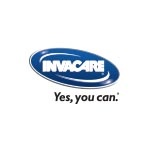Always refer/abide by the requirements of your local, state and government health requirements. This posting is for informational purposes only and should not be a replacement for the best practices recommended by your local, state, government, and company requirements.
This bulletin shares information on the handling and cleaning of equipment that has been used in the treatment of a COVID-19 patient and is based on information provided by OSHA, CDC, and other public health sources.
Cleaning and disinfection of equipment: Follow standard practices for high-level disinfection and sterilization of semi-critical and critical medical devices contaminated with COVID-19. A recent National Institute of Health study found that the COVID-19 coronavirus can survive up to four hours on copper, up to 24 hours on cardboard, and up to two to three days on plastic and stainless steel. The researchers also found that this virus can suspend as droplets in the air for up to three hours before they fall. But most often they will fall more quickly. (Per Harvard Health - https://www.health.harvard.edu/diseases-and-conditions/coronavirus-resource-center).
It is recommended that equipment be isolated until active viruses are decontaminated. The recommended isolation time is at least 72 hours. Based on this information, it is suggested that any equipment picked up from the home of a person that tested positive for the COVID-19 virus should be wiped down with a disinfectant that is rated to have antivirus capabilities and subsequently isolated for at least 72 hours.
COVID-19 is a coronavirus and highly susceptible to inactivation by many commonly used disinfectants. Products effective at inactivating the virus should be selected based on data associated with inactivating similar or hardier (i.e., more difficult to inactivate) viruses. The current EPA list of disinfectants for use against COVID-19 can be found at www.EPA.gov. Whichever disinfectant is used, you must keep in mind the required contact times. Please note that the use of harsh abrasives may damage the plastic housing on the Oxygen Concentrator. Check for signs of cracking after cleaning. If cracks appear the unit should be taken out of service. Items used directly by/on the patient (such as the cannulas, cannula extenders, humidifier bottles and other disposable items) as well as filters must be changed between patients and discarded. Consult with the appropriate governmental agency on the best practice for disposing such items.
Currently, OSHA recommends following SARS disinfection practices (see section D-9 in the linked https://www.cdc.gov/sars/guidance/I-infection/healthcare.html document - https://www.cdc.gov/sars/guidance/I-infection/healthcare.html for patient care equipment contaminated with COVID-19) as follows:
Patient-care equipment Follow standard practices for handling and reprocessing used patient-care equipment, including medical devices. Wear gloves when handling and transporting used patient-care equipment. Wipe heavily soiled equipment with an EPA-approved hospital disinfectant before removing it from the patient’s room. Follow current recommendations for cleaning and disinfection or sterilization of reusable patient-care equipment. Wipe external surfaces of portable equipment for performing . . . procedures in the patient’s room with an EPA-approved hospital disinfectant upon removal from the patient’s room.”
The CDC advises the use of EPA-registered chemical germicides that provide low or intermediate level disinfection for SARS during general use (surface and noncritical patient-care equipment) because these products inactivate related viruses with similar physical and biochemical properties. CDC’s Guideline for Disinfection and Sterilization in Healthcare Facilities, 2008 provides information on the effectiveness of germicides on non-COVID-19 coronaviruses (https://www.cdc.gov/infectioncontrol/guidelines/index.html).
Workplace Safety: In addition to the equipment cleaning guidelines provided above, measures for protecting workers from exposure to, and infection with, COVID-19 depend on the type of work being performed and exposure risk, including potential for interaction with infectious people and contamination of the work environment. Please see www.osha.gov for more information.


